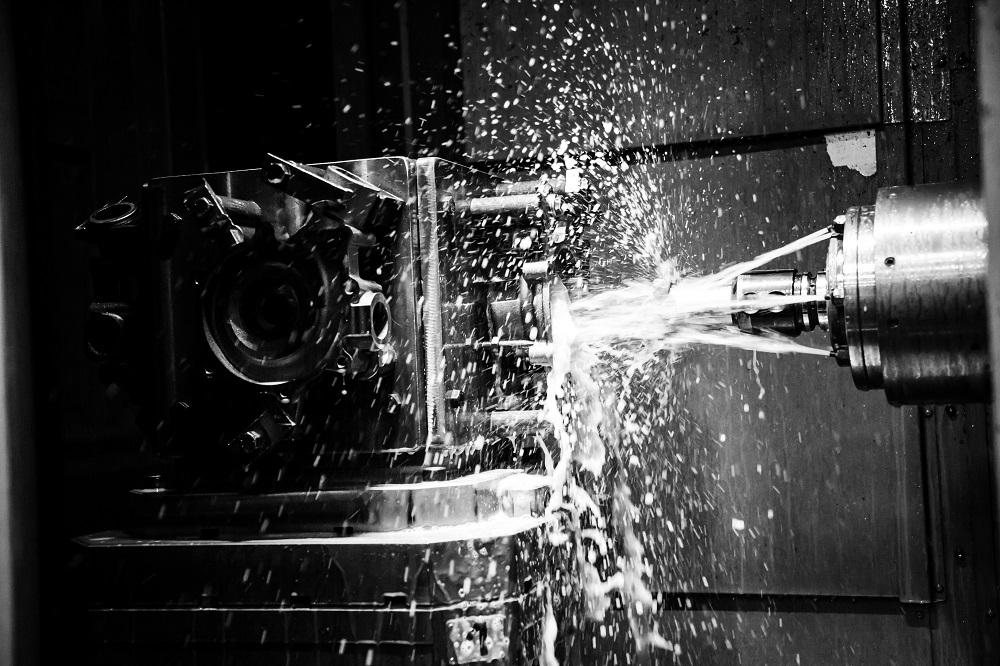Using the right cutting fluid in your machining operation is critical to extending tool life, increasing productivity, and preventing damage to workpieces. But the right coolant application system is just as important to ensure your cutting fluids are able to do their job.
What Coolant-Through Systems Do
A coolant-through system includes three main types:
Flood systems wash a cutting tool or workpiece with a high volume of coolant during the machining process. Coolant through tool systems concentrate high pressure coolant through the cutting tool itself (such as a drill bit) to deliver high-pressure and precise coolant. Mist coolant systems spray cutting fluid as an atomized vapor.
No matter which one you’re working with, the goals of all three systems are the same:
Clear Chips
The metal chips and other debris created during the metalworking process must be constantly cleared from the workpieces and tools to maintain a clean cutting zone. In drilling operations, a build-up of chips might lead to enlarged holes or broken drills, causing expensive scrap parts. Contamination can cause poor surface finish of the workpiece and premature tool failure.
In some materials, such as aluminum and soft steels, chips can be gummy. Failing to clear them might cause them to weld on the cutting tool. This is one of the main functions of coolant, to provide lubricity and eliminate built up edges on the cutting tool.
Reduce cutting and part temperatures
Coolant-through systems continually lower the temperature of the workpiece and cutting tool. Lower temperatures allow greater material removal rate.
The Right System for the Job
The best coolant-through system for your workshop is one that provides the best value. The primary aspects to consider are:
Cost
Coolant-through systems are one of the most beneficial innovations in coolant application, but they’re also some of the most expensive. On average, through-tool coolant systems can cost at least 50 percent more than flood coolant systems. These coolant-through systems also require higher performance fluids with better foam control and filtration to recycle and keep clean.
Flood coolant systems are much cheaper to maintain and less likely to require upgrades to other areas of your operation. Coolant-through systems can require upgrades to the machine tool itself in retrofit applications.
Weigh the costs of each solution to determine which is the best option for you, factoring in machine upgrades, coolant use, and even increases and losses in revenue that might come from changes in productivity.
Machining Operation
Flood coolant is ideal for general machine operations, slower speeds and feeds, and machines not designed for coolant through systems.
Traditionally, deep-hole drilling operations have to “peck” the tool to allow flood coolant access to clear the hole of chips. With through-spindle setups (a type of through-tool setup), the coolant blasts directly from the drill tip, eliminating the need to “peck” and greatly improving efficiency.
Coolant Mist and MQL systems can be used in milling, profiling, and turning operations because the mist fluid provides lubricity where the air blast clears chips.
Workpiece Material
Another consideration is the type of metals or alloys being machined. Flood coolant systems will minimize dust more than other solutions when working with highly abrasive materials, such as iron and cast iron, leading to better workshop air quality.
Ultimately, the right coolant-through system is the one that’s best-suited for the types of material you’re working with, and the products you’re manufacturing. Consult with your machine manufacturers and coolant supplier about your challenges, output needs, and goals. They will be able to provide you with information on the best combination of coolant and coolant application systems for your operations.
Call +1 800-537-3365 or email us at [email protected] for help.
